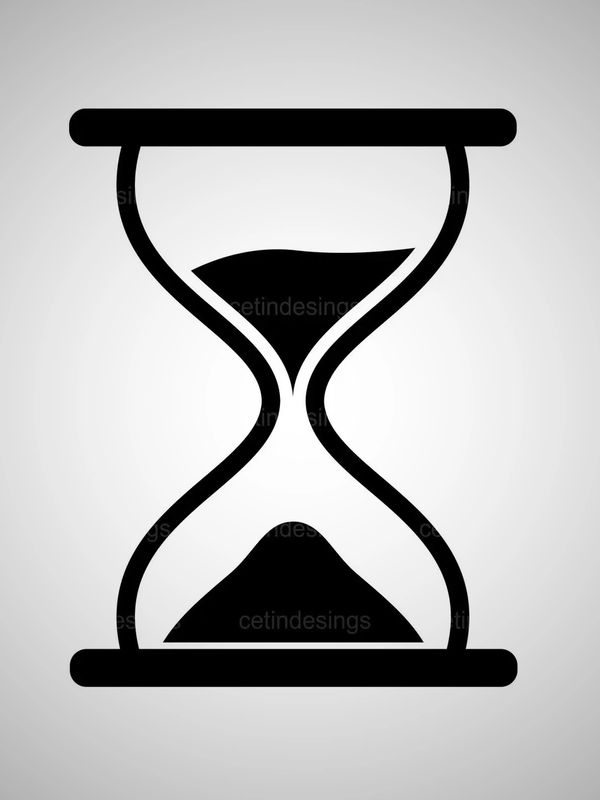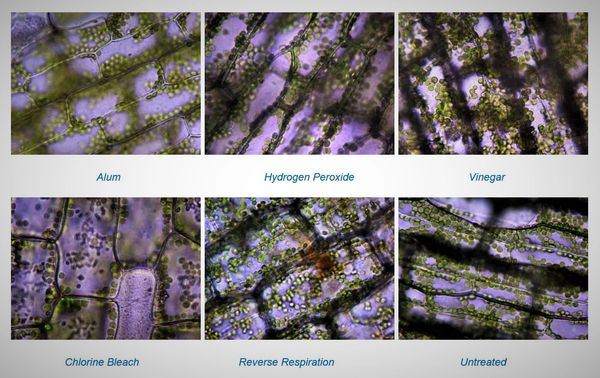- Home
- Reverse Respiration
- Tales from the Crypts
- The Chymatous Zones
- Pressure Tactics
- CO2 Saturation Over Time
- SnailsWormsAlgaeDiatoms
- A Tough Egg to Crack
- Algae Expiration
- pH Shifting
- Chlorophyll-A Affects/pH
- Algae Destruction from Re
- Timing is Everything
- Too Much of a Good Thing
- Night & Day
- Nothing and Something
- The Solution=The Solution
- INSTRUCTIONS
- In Memoriam
- Growth Stimulation
- Probable Improbabilities
- References
- Questions or Comments?
- Testimonials
- Upcoming Projects
Reverse Respiration, Explained

Introduction
Reverse Respiration disinfects aquatic plants without chemicals and is easily performed by anyone without special equipment by simply alternating the lighting and the CO2 levels in the water in cycles that favors plants--and eliminates pests. Reverse Respiration costs less than $1.00 US to implement.
Plants require CO2 and O2 during their day and night cycles. Reverse Respiration works by first denying oxygen to pests during a CO2 cycle of the plants--12 hours in the dark.
During that 12-hour cycle (nighttime), the plants are immersed in a pure CO2 solution which enhances plant respiration but asphyxiates all of the pests.
During the next 12-hour cycle (daylight) the plants are taken out of the CO2 and aerated (oxygenated), denying CO2 to any anaerobic pests.
In addition, the sudden change from the CO2 state to the O2 state also kills the algae (see pH Shifting) and renders any parasite eggs infertile.
To summarize:
- When the plants desire CO2, we exclude O2 and the aerobic pests perish;
- When the plants desire O2, we exclude CO2 and the anaerobic pests perish;
- When the change from the CO2 to O2 state occurs, it kills eggs and algae.
Twelve hours past the beginning of the second cycle, there are no pests, no eggs, no algae--and the only residue is water!

Time Frame and History of the Experiment
The original experiment design had a time frame of two months. This included a month of promoting pest breeding in the infested plants under test. Additional time was required post-cleaning to observe for long-term plant damage or growth, and to observe if any eggs remained fertile.
To that end, the experiment was expanded to 6 months--with fourteen tanks in two locations--in order to facilitate testing all of the nominated technologies.
In the 6 months subsequent to the treatments, no eggs remained viable and no pests survived. Disinfection was deemed to be 100%.
In our tests no plants perished. We did observe that classic "melt" accelerated in more delicate plants but none perished in our tests.
In fact, not only did we not observe any plant damage from Reverse Respiration, we observed post-disinfection growth stimulation in several minor respects. These included: early new sprouts, pearling when the control plants had none, and an increase in chloroplast population when viewed under the microscope.
No further tests were performed on this apparent growth stimulation as we limited our testing exclusively to assess plant damage if any.

Categorically Speaking: Dynamic and Static Entities
The method and time for expiration of all the snails and worms we saw were similar, but vastly different than the timing for algae and live eggs.
To that end, we’ve grouped the parasites into two categories, based upon the time required for expiration: Dynamic Entities (snails, worms, all pests with motility) and Static Entities (non-motile i.e., algae, diatoms, eggs).
Dynamic Entities (identified-there were numerous unidentified pests as well) used in the Experiment.
- Ostracodes
- Various Copepods
- Various Nematodes
- Planaria
- Detritus Worms
- Collembola (hexapods)
- Pond snails
- Bladder snails
- Ramshorn snails
- Various black and clear shelled snails
- Limpets
- Hydra
- Aphids
- Insect larvae
Static Entities used in the Experiment
- Cryptocoryne retrospiralis
- Cryptocoryne wenditii
- Vallisneria contortionist
- Anacharis
- Susswassertang
- Java moss
- Hornwort
- Java fern
- Marimo algae
- Rotala rotundifolia
- Anubias
- Amazon sword
Please note: Throughout this article, we’ll be taking some semantic license in categorizing for brevity and consistency;
All plant cell content that is not chlorophyll-a will be referred to as "achlorophyllous cytoplasm" (all non-chlorophyllic enzymes, lipids, pigments and proteins, etc.).
All references to gas spaces in plants, regardless of location, will be referred to as "chymatous zones".

Plant Damage
The first casualty in plant cleaning is usually some plant damage and some mass loss. Comprehensive testing requires control batches (samples without changes imposed) that very closely mirror the batches under test. The “controls” are parameters where we have natural or original vs a sample under test.

Upon Closer Examination
Our first control was a microscopic examination of the cells and content from an anacharis leaf treated with one of four popular aquatic plant cleaning methods: alum, hydrogen peroxide (H2O2), vinegar, and chlorine bleach, as well as Reverse Respiration.
Below we have specified timing and quantities for each procedure for a more linear comparison:
Alum: 1 tablespoon per gallon, 2-day treatment.
Relatively gentle, alum did minor damage to chloroplasts, but alum’s extreme acidity caused substantial dissolution of achlorophyllous cytoplasm (usually brown or yellow in color). Vascular activity continued--that and being multicellular--are why the plant largely recovered from the damage.
Hydrogen Peroxide (H2O2): 1 part 3% H2O2 + 1 part water, 10 minute treatment.
A mild antioxidant, H2O2 partially dissolved some achlorophyllous cytoplasm and partially oxidized (yellowed) the chloroplasts. Vascular activity continued--as in the alum treatment--and as with alum above, being multicellular is also why the plant largely recovered from the damage.
Anacharis Cleaned with Hydrogen Peroxide
Vinegar: 1 part vinegar to 15 parts water, 5 minute treatment. Vinegar treatment resulted in minor achlorophyllous cytoplasm dissolution from extreme acidity but less damage to chloroplasts. Vascular activity continued--as in the alum and peroxide treatments--and like both other treatments, being multicellular is also why the plant largely recovered from the damage.
Anacharis Cleaned with Vinegar

Upon Closer Examination, cont'd
Chlorine Bleach: 1 part bleach to 19 parts water, 2 minute treatment (neutralized with dechlorinator). Virtually all achlorophyllous cytoplasm was removed and approximately half of the chloroplasts were killed, making this the most caustic of all treatments tested. Vascular activity continued--as in the alum , peroxide and vinegar treatments--and like the other treatments, being multicellular is also why the plant largely recovered from the damage.
Reverse Respiration: 12 hours in CO2 solution in the dark followed by 30 minutes plain, aerated water in the light. With Reverse Respiration, we experienced almost no cytoplasm loss. Chloroplasts were a brilliant green from the intense CO2 infusion and appeared nearly identical to the untreated plant. Achlorophyllous cytoplasm (usually brown to yellow in hue) were clearly visible and virtually unchanged from untreated plants. Vascular activity is dense and has rapid chloroplast activity, almost identical to an untreated plant.
Anacharis Cleaned with Reverse Respiration
There was little question that Reverse Respiration is, by far, the gentlest plant cleaning method we tested. Of all the techniques tested, within the limits of visual microscopic analysis, it inflicted no perceivable damage to the cell contents, proteins, enzymes and chloroplasts, and the only cleaning process that did not slow or reduce vascular activity.

Unexpected Weight Gain
Our next control for this test was plant mass, that is: Does it lose any mass during the cleaning?
We weighed the plants dry (when possible) to retain accuracy, or by using a fluid displacement method.
Fluid displacement can, in some instances, be more accurate than just weighing, since it ignores water weight on the plant. Alternatively, with this method, you can weigh portions of the plant without cutting to determine if there was any measurable mass loss after cleaning.
With Reverse Respiration, we not only observed no plant damage, but after treatment, we actually measured a GAIN in mass.
What we found was the cleaned plant’s mass increased temporarily.
This was not literal plant mass but actually the gas spaces within the plant, here, collectively referred to as the chymatous zones, filling with the CO2 solution.

Pearling (internal gasses escaping the chymatous zones)
We found that an aquatic plant immersed in CO2 solution temporarily increases in mass, in concert with immediate “pearling.” This was further evidence of the chymatous zones filling with CO2 solution.
- Tales from the Crypts
- The Chymatous Zones
- Pressure Tactics
- SnailsWormsAlgaeDiatoms
- A Tough Egg to Crack
- Algae Destruction from Re
- Timing is Everything
- Too Much of a Good Thing
- Night & Day
- Nothing and Something
- The Solution=The Solution
- INSTRUCTIONS
- In Memoriam
- Growth Stimulation
- Probable Improbabilities
- References
- Questions or Comments?
- Testimonials
- Upcoming Projects

Announcements
1. Reverse Respiration has a sister website! Visit us at: watercolorstestchart.com
2. Reverse Respiration has been awarded a U.S. Patent!
3.If you use the API test kit, you need WATERCOLORS!